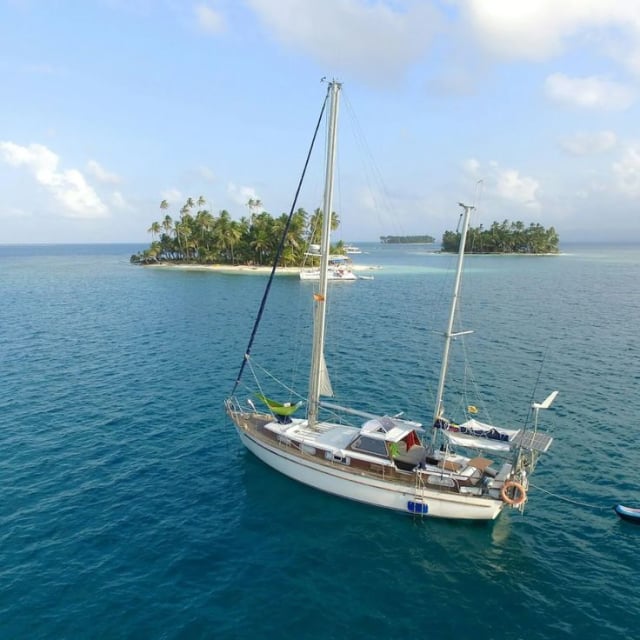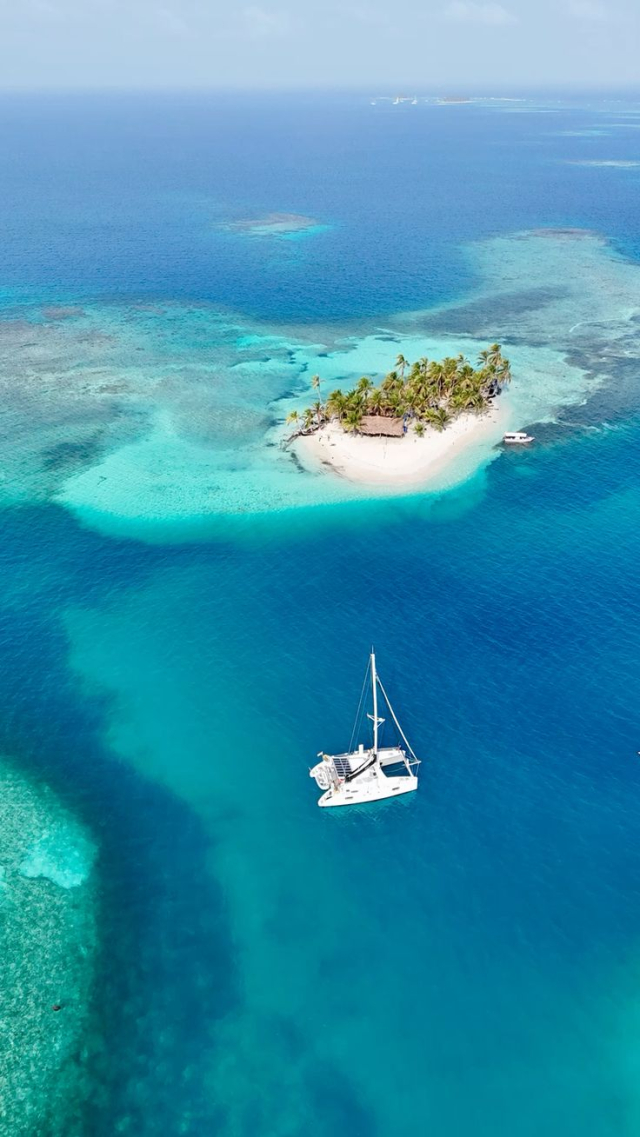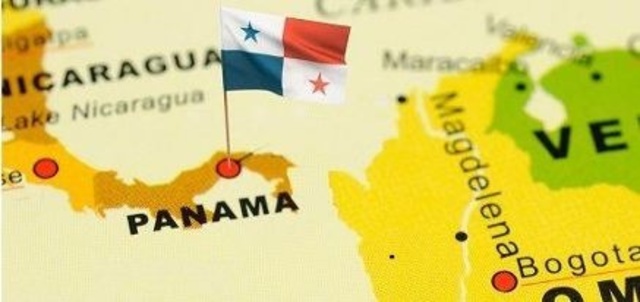Sailing from Cartagena, Colombia, to Panama is a unique experience that combines the thrill of adventure with the majesty of the Caribbean . This journey is not just a trip from one point to another; it is an immersion in a seascape of crystal-clear waters, paradisiacal islands, and clear skies . From the moment you leave the bay of Cartagena, you feel the freedom of the open sea, accompanied by the gentle tropical breeze and the bright sun that lights the way to Panama.
Along the route, you can see stunning coral reefs, white sand beaches and small islands that emerge like jewels in the vast ocean. It is a trip that appeals to both experienced sailors and those looking for a different way to explore the Caribbean. The journey offers the opportunity to disconnect from the hustle and bustle of everyday life and connect with nature in its purest state.
The tour also allows for close interaction with the rich marine biodiversity , from multicoloured fish to dolphins that often accompany the boats on their journey. It is also an opportunity to meet local communities living on these islands , and learn about their customs and ways of life, which are deeply linked to the sea.
However, while the journey is undoubtedly wonderful, it also requires careful planning and preparation . It is essential to take into account weather conditions, safety on board and navigation routes, to ensure that the trip is both safe and enjoyable.
You may also be interested in: Around the world on a sailboat
Which boat to take from Cartagena to Panama?
Sailing from Cartagena to Panama is done primarily on sailboats due to a combination of factors related to geography, climate, local regulations and the characteristics of this type of vessel. Some of the reasons why these vessels are ideal for this journey are:
- Favorable weather conditions: The Caribbean region between Cartagena and Panama is dominated by the trade winds, which generally blow from the northeast to the southwest. These constant and predictable winds are ideal for sailing, allowing sailboats to take advantage of the force of the wind to move forward without having to rely exclusively on an engine.
- Geography and routes: The route between Cartagena and Panama passes through remote and often undeveloped areas, such as the San Blas archipelago, which has few fueling facilities. Sailboats, not being as dependent on fossil fuel as motorboats, can travel these long distances without worrying about the availability of gas stations. In addition, sailboats can access shallower waters and protected bays that are unreachable by larger vessels.
- Sailing and Sightseeing Experience: Many travelers choose this sailing route not only for the efficiency of the trip, but for the experience itself. Sailing is a calmer and more eco-friendly way to travel, allowing for a more intimate connection with the natural environment. Sailboats allow travelers to enjoy the scenery, make stops at uninhabited islands, snorkel on reefs, and meet local communities such as the Guna Yala in San Blas.
- Local restrictions and practices: In some areas, such as the San Blas Islands, local authorities and indigenous communities limit access to certain vessels, preferring that visitors arrive by sailboat to reduce environmental impact and preserve the ecological balance of the region. This makes sailing not only a preferred option, but sometimes the only one permitted or practical.
- Autonomy and sustainability: Sailboats offer greater autonomy compared to motorboats. They are able to generate their own energy through solar panels or windmills and do not depend as much on external fuel supplies. This is especially important on a long route such as Cartagena to Panama, where offshore refueling can be difficult.
You may also be interested in: Historical and archaeological sites to visit by yacht
How long does it take to sail from Cartagena to Panama?

The time it takes to sail from Cartagena to Panama by sailboat can vary depending on several factors , including the type of sailboat, weather conditions, and the sailing preferences of the captain and crew . On average, the crossing can take between 4 and 5 days . This time considers a calm sail, taking advantage of favorable currents and winds, as well as stops in the San Blas Islands to rest , enjoy the surroundings, and complete entry procedures to Panama .
Cruising in the Caribbean can be unpredictable, so it's important to be prepared for any eventuality. The trade winds , which are predominant in the region, typically blow from east to west, making sailing in this direction easier. However, during hurricane season (June to November) , the weather can become more volatile, which could extend the duration of the trip or require changes to the planned route .
You may also be interested in: Sailing through the Bermuda Triangle
Recommendations for sailing from Cartagena to Panama

- Weather Conditions: It is vital to check the weather forecast before setting sail, as tropical storms can be dangerous.
- Safety Equipment: Make sure you have life jackets, flares, first aid kit and other safety equipment on board.
- Sailing Route: Plan your route in advance, including stops at intermediate islands such as the San Blas Islands, to rest and replenish supplies.
- Documentation: Check that all necessary documents, such as passports and navigation permits, are in order and up to date before leaving.
You may also be interested in: Maritime rescue services
What supplies to bring when sailing from Cartagena to Panama?
- Drinking water: Water is, without a doubt, the most critical resource. It is recommended to calculate at least 3 liters of water per person per day, for direct consumption and food preparation. On a 5-day trip with 4 people on board, this equates to a minimum of 60 liters of water.
- Non-perishable foods: It's important to bring foods that can be kept well for several days without refrigeration. This includes canned goods (tuna, sardines, beans, vegetables), pasta, rice, dried legumes, nuts, and energy bars. These items are easy to store and prepare.
- Fresh fruits and vegetables: Although fresh fruits and vegetables are perishable, some can last for several days if stored properly. Apples, oranges, carrots and potatoes are good choices to bring on board, as they are hardy and provide essential vitamins.
- Proteins and meats: If you have a refrigerator on board, you can bring fresh meats such as chicken or beef for the first few days of your trip. Another option is to bring beef jerky or sausages that don't require refrigeration. Eggs are also a great resource, as they can stay fresh for several days without refrigeration if stored in a cool, dry place.
- Condiments and cooking essentials: Salt, sugar, coffee, tea, olive oil, spices and dried herbs are essential to flavor meals on board. It is also advisable to bring bread, tortillas or crackers as accompaniments.
- Snacks and sweets: To keep your energy and spirits up during the journey, it is advisable to carry a good supply of snacks such as biscuits, chocolate, nuts, and dried fruit. These foods are easy to consume during night shifts or between meals.
- Cooking Utensils and Equipment: Make sure you have a gas stove or portable burner on board, along with enough gas cylinders to last the entire trip. A pot, pan, knives, cutting boards, plates and cutlery are also essential. Don't forget to bring basic utensils such as can openers, spatulas and wooden spoons.
We invite you to take a look at other articles at: https://yate.co/en/blog




